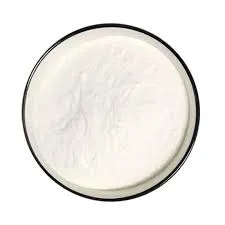
marras . 24, 2024 23:45 Back to list
Exploring the Applications and Properties of HPMC in Various Industries and Formulations
The Versatile Role of Cellulose Ether HPMC in Modern Applications
Hydroxypropyl Methylcellulose (HPMC) is a non-ionic cellulose ether that has garnered significant attention across various industries due to its unique properties and versatility. Derived from natural cellulose, HPMC is synthesized through the modification of cellulose with hydroxypropyl and methyl groups. Its exceptional characteristics such as water solubility, viscosity, and film-forming ability make it a vital ingredient in a myriad of applications ranging from pharmaceuticals to construction materials.
Chemical Structure and Properties
HPMC is characterized by its ability to dissolve in water, forming a clear and viscous solution. The degree of substitution of the hydroxypropyl and methyl groups significantly influences its properties, including solubility and viscosity. This modification enhances the performance of HPMC, making it suitable for diverse formulations. The molecular weight of HPMC also plays a critical role in determining its functionality; higher molecular weights typically result in increased viscosity.
Pharmaceutical Applications
In the pharmaceutical sector, HPMC is widely used as a binder, thickener, and film-coating agent in tablet formulations. Its ability to retain moisture makes it an excellent excipient in controlled-release formulations, allowing for a gradual release of the drug over time. This property is particularly valuable for chronic disease management, where maintaining steady drug levels in the bloodstream is crucial.
Moreover, HPMC’s biocompatibility ensures that it is safe for use in various pharmaceutical applications. Its formulation in eye drops as a lubricant showcases its effectiveness in alleviating dry eye symptoms due to its high viscosity and water-retaining properties, providing extended comfort for users.
Food Industry Applications
HPMC is also prevalent in the food industry, where it serves as a thickening agent, emulsifier, and stabilizer. Its ability to form gels and retain moisture makes it ideal for use in sauces, dressings, and bakery products. As a food additive, HPMC is classified as generally recognized as safe (GRAS) by the FDA, which enhances its appeal in food formulations. Additionally, it is gluten-free, making it a valuable component in gluten-free products, providing texture and mouthfeel that is often compromised in such formulations.
cellulose ether hpmc

Construction Industry Utilization
In the construction industry, HPMC is utilized as an additive in cement-based products. Its water-retention properties improve the workability of plaster, mortar, and tile adhesives. By slowing down the evaporation of water during the curing process, HPMC helps to enhance the strength and durability of these materials. This is particularly important in construction settings where temperatures can rise rapidly, leading to premature drying and cracking.
Moreover, HPMC also acts as a rheology modifier, allowing for the manipulation of the flow properties of construction materials, ensuring better application and spreading. This feature is critical for achieving optimal performance in various construction tasks.
Cosmetic and Personal Care Products
In the realm of cosmetics and personal care, HPMC is prized for its thickening, stabilizing, and emulsifying properties. It is commonly found in creams, lotions, and gels, where it aids in providing a desired texture and consistency. Its film-forming ability allows for enhanced spreading properties and improves the overall sensory feel of personal care products.
Additionally, HPMC is often used in hair care products, where it provides hold and styling support without stiffness, maintaining a natural appearance while delivering performance benefits.
Conclusion
The multifaceted functionality of Hydroxypropyl Methylcellulose (HPMC) underscores its significance in various industries. Its unique properties allow it to serve as an indispensable component in pharmaceuticals, food formulations, construction materials, and cosmetics. As industries continue to innovate, the demand for cellulose ethers like HPMC is expected to rise, driven by the need for sustainable and effective solutions in product development. With ongoing research and development, the potential applications of HPMC are likely to expand further, establishing it as a cornerstone ingredient in modern formulations.
-
Unlocking the Benefits of HPMC Products: A Gateway to Versatile Applications
NewsAug.07,2025
-
Unleashing the Potential of HPMC Ashland: A Comprehensive Look
NewsAug.07,2025
-
Tile Bonding Cellulose: The Key to Superior Adhesion and Durability
NewsAug.07,2025
-
Hydroxypropyl Methylcellulose Powder: The Versatile Component in Modern Pharmaceuticals
NewsAug.07,2025
-
Hydroxyethyl Cellulose: The Versatile Solution for Various Industries
NewsAug.07,2025
-
Hydroxyethyl Cellulose (HEC): The Versatile Polymer for Various Applications
NewsAug.07,2025







